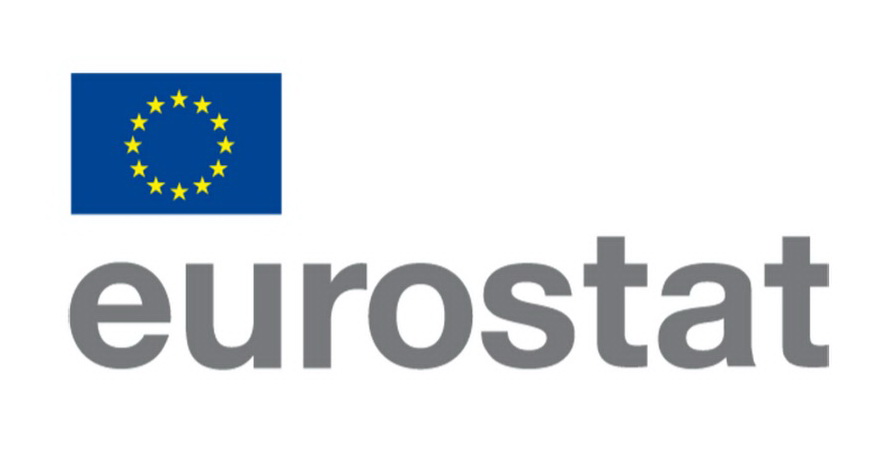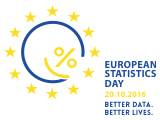| Category: | Demographic and social statistics |
| Area: | Employment and earnings |
| Survey / data collection: | Labour force survey |
| MONSTAT metadata |
|---|
| Reference metadata |
| 1. Contact |
| 2. Metadata update |
| 3. Statistical presentation |
| 4. Unit of measure |
| 5. Reference period |
| 6. Institutional mandate |
| 7. Confidentiality |
| 8. Release policy |
| 9. Frequency of dissemination |
| 10. Accessibility and clarity |
| 11. Quality management |
| 12. Relevance |
| 13. Accuracy and reliability |
| 14. Timeliness and punctuality |
| 15. Coherence and Comparability |
| 17. Data revision |
| 18. Statistical processing |
| 19. Comment |
Note: For any question on metadata, please contact MONSTAT metadata support.
| 1. Contact Vrh | |
| 1.1. Contact organization: | Statistical Office of Montenegro - MONSTAT |
| 1.2. Contact organization unit: | Department of Labour Market Statistics |
| 1.2. Contact organization unit: | IV Proleterske 2, 81000 Podgorica, Montenegro |
| 2. Metadata update Top | |
| 2.1. Metadata last certified: | |
| 2.2. Metadata last posted: | 29 December 2023 |
| 2.3. Metadata last update: | 7 October 2020 |
| 3. Statistical presentation Top | |
| 3.1. Data description: | The Labour Force Survey measures the economic activity of the population in a short period of observation of a one week. The survey collects demographic and educational characteristics of household's members by sex, characteristics of the main and additional (second) job, the work that a person has done in the past, the status in employment, working hours, working time, economic activity, occupation, characteristics of the unemployed, inactive person. Accordingly, the main categories covered by this survey are: total employment, unemployment, demographic, educational, socio-economic and other characteristics of individuals.One of main survey aims is to apply international standards in defining total employment and unemployment so that these categories can be compared with the same categories in other countries, especially European countries. The survey is based on the ILO recommendation both in sample selection procedure and drafting the questionnaire. The Labour Force Survey is carried out in compliance with standards and recomendations of the International Labour Organisation (ILO) guidelines for labour force statistics, as well as in compliance with E uropean legislative acts of the Council and Parliament, and with EUROSTAT's requirements in relation to a methodology, survey organisation, sample procedure, designe of questionnaires and definition of employment and unemployment. |
| 3.2. Classification system: | NACE Rev. 2, ISCO 08, ISCED 2011 The country codes |
| 3.3. Sector coverage: | Not relevant. |
| 3.4. Statistical concepts and definitions: | The most important variables used and collected by the Labor Force Survey are the following: working age population, employed persons, employees, self-employed persons, family worker, unemployed persons, active population, inactive population, activity rate, employment rate, unemployment rate. Household is considered to be: a) any family or other union of persons who reported to live together and pool their income to satisfy essential needs for living (housing costs, food costs, etc.), regardless if they all members are in place where the household lives or out of that place during the interviewing; b) any person who lives alone (one-person household), and possesses his/her own household in another place; who lives in a separate or dividable housing unit or like subtenant, regardless if he/she occupies the same room as with other person who lives alone or members of household members-tenant, but who does not pool his/her income, only pays his/her own housing costs. Labour Force Survey provides the data on population aged 15 years and over by activity in the reference quarter, not by formal status of interviewed persons. Working age population comprises all persons aged 15 years and over. The term employed in the survey refer to persons who: - Performed any work for wage or profit (in cash, goods or services) during the reference week, even for one hour. Persons who receive wages for on-the-job training (apprentices or trainees) are also considered as employed. - Did not work (due to illness, annual leave or state holidays, education or training, maternity/paternity leave, reduced production and other temporary inability to work) but had a job or business from which he/she was absent during the reference week is considered as employed. Self-employed persons with a business or farm are also considered to be working if one of the following applies: - A person works in his own business or farm for the purpose of earning a profit, even if the enterprise is failing to make a profit; - A person spends time on the operation of a business or farm even if no sales were made, no professional services were rendered, or nothing was actually produced (for example, a farmer who engages in farm maintenance activities; an architect who spends time waiting for clients in his/her office; a fisherman who repairs his boat or nets for future operations; a person who attends a convention or seminar); - A person is in process of setting up a business or farm, such as the buying or installing of equipment, renting the office or ordering of supplies in preparation for opening a new business; - A person who works on its own agriculture farm should be considered as employed if worked during the reference week. A person who works on its own small agriculture farm, and sell their products are also considered as employed. A family worker is a person who assisted the other member of the household in running family business or agricultural holding, without receiving any formal pay, and providing that they not considered themselves as employed. The term unemployed refers to persons who: - In the reference week did not work (not in paid employment or self-employment and did not do any paid work), - in the past four weeks were actively seeking work (specific steps were taken to seek paid employment or self-employment), - were currently available for work (within two weeks). Persons who had found a job to start later are also included among unemployed persons. Active population (labour force) include persons in employment (employed persons) and unemployed persons aged 15 years and over. Inactive population are all persons aged 15 years and over, who are neither employed nor unemployed. Activity rate represents the percentage of active population in the total population aged 15 years and over. Employment rate represents the percentage of persons in employment in the total population aged 15 years and over. Unemployment rate represents the percentage of unemployed persons in the total active population. Inactivity rate represents the percentage of inactive population in total population aged 15 years and over. |
| 3.5. Statistical unit: | Private households and working age population - persons old 15 years and more. |
| 3.6. Statistical population: | The Labor Force Survey results cover the total population residing in Montenegro, except for persons living in collective or institutional households. While demographic data are gathered for all age groups, questions relating to labour market status are restricted to persons old 15 years or more. |
| 3.7. Reference area: | Montenegro and the regions (northern, central, and southern). Regions used do not make an official, but geographical division of Montenegro. The northern region consists of municipalities: Andrijevica, Berane, Bijelo Polje, Petnjica, Rozaje, Gusinje, Plav, Mojkovac, Kolasin, Pljevlja, Zabljak, Savnik, and Pluzine. The central region consists of the following municipalities: Podgorica, Niksic, Danilovgrad and Cetinje. The southern region of the municipality is Herceg Novi, Tivat, Kotor, Budva, Bar and Ulcinj. |
| 3.8. Time coverage: | The data have been available since 2007. |
| 3.9. Base period: | Not relevant. |
| 4. Unit of measure Top | |
| Most results measure number of persons (thousands). Some indicators are reported as rates (employment, unemployment) and some variables are reported in other units, e.g. ages in years and working time in hours. | |
| 5. Reference period Top | |
| Labour Force Survey was carried out in 2004-2007 as an annual survey, but since 2008 LFS is carried our continuously during a whole year and survey results are published quarterly. According to the regulations of Eurostat, the week starts on Monday and ends on Sunday. By convention, the first week of the year is the week including the first Thursday. The 1st reference quarter consists of 13 consecutive weeks starting from that week. Built in this way, the quarterly sample is spread uniformly over all weeks of the quarter. | |
| 6. Institutional mandate Top | |
| 6.1. Legal acts and other agreements: | The Law on Official Statistics and Official Statistical System (Official Gazette of Montenegro No 18/12 and 47/19) defines provisions for collection, processing, and dissemination of data. The Law provides to the Statistical Office legal powers to collect and access the data necessary for the implementation of Programme and Annual Plan. The Law gives a priority to the use of administrative data and right of access to individual data that are a result of survey of other official statistical producers. As an annex to legal provisions, Statistical Office has signed several memoranda on cooperation with administrative data providers. |
| 6.2. Data sharing: | Signed agreement on cooperation with the official statistical producers: 1. Customs Administration 2. Tax Administration 3. Ministry of Finance 4. Central Bank of Montenegro 5. Trilateral agreement (MONSTAT, Ministry of Finance, and Central Bank of Montenegro) International institutions: 1. EUROSTAT 2. UN organizations 3. IMF 4. World Bank |
| 7. Confidentiality Top | |
| 7.1. Confidentiality - policy: | Articles 53-60 of the Law on Official Statistics and Official Statistical System (Official Gazette of Montenegro No 18/12 and 47/19) provide a framework for protection, use, and transmission of confidential data. Statistical office has produced two comprehensive rulebooks that cover the procedures for individual data protection as well as keeping individual records. With purpose of the meeting legal framework on functioning of security system and statistical confidentiality there was adopted the Rulebook on Keeping Statistical Data by which Manner, Time, Technical Conditions and Organization of Statistical Data Storage to Prevent Their Destroying, Misappropriation, and Unauthorized Use is Regulated as well as the Rulebook on Contents and Manner of Keeping Records on Users of Individual Statistical Data by which contents and manner of keeping records on users of individual statistical data is regular. Pursuant to the Article 59, an access to the confidential data is limited to persons performing duties and tasks of official statistical producer and up to the stage the data are necessary for official statistical production. Persons that performs duties and tasks within official statistical producers must sign the statement on respecting the principle of confidentiality. Law on Official Statistics and Official Statistical System is aligned with the Regulation No 223/2009 and the Regulation (EU) 2015/759 from 29 April 2015 that also regulate confidentiality provisions. The Government of Montenegro adopted the Statement on Commitment of Confidence in Official Statistics (Commitment of Confidence). |
| 7.2. Confidentiality - data treatment: | |
| 8. Release policy Top | |
| 8.1. Release calendar: | The Law on Official Statistics and Official Statistical System (Official Gazette of Montenegro No 18/12) stipulates that official statistical producers prepare, update, and publish Statistical Release Calendar. It is published on the website of Statistical Office not later than 20 December for the next year, for all official statistical producers that includes date of releasing statistical data. Any change in date of releasing in the Calendar is published in advance in accordance with the Procedure on Unplanned Revisions. |
| 8.2. Release calendar - access: | http://www.monstat.org/eng/page.php?id=12&pageid=12 |
| 8.3. User access: | General aim of official statistical producer is to meet the needs of users, and to make an access to statistical data to users in an understandable manner, simultaneously and under the same conditions. Statistical Office is obliged to produce and disseminate official statistics in objective, transparent and professional manner, so that all users are equally treated. |
| 9. Frequency of dissemination Top | |
| Quarterly and yearly. | |
| 10. Accessibility and clarity Top | |
| 10.1. News release: | The data are available on the website of MONSTAT and in paper form: http://www.monstat.org/eng/page.php?id=22&pageid=22 |
| 10.2. Publications: | Statistical Office publishes the following regular publications: 1. Statistical Yearbook, 2. Montenegro in figures, 3. Monthly statistical review. In addition to the above regular ones, Statistical Office publishes also additionally publications. Some of the most important additional publications are as it follows: 1. Women and Men in Montenegro, 2. The most often used statistical data All publication published by Statistical Office are available at the following link: http://monstat.org/eng/publikacije.php |
| 10.3. Online database: | Not available. |
| 10.4. Micro-data access: | The Law on Official Statistics and Official Statistical System (Official Gazette of Montenegro No 18/12) regulates rules under which external users can obtain an access to individual data for needs of research. Article 58 defines types of scientific and research organizations that can obtain such data. Providing individual data without identifier is possible only upon a written request of scientific and research institutions, with purpose of performing scientific and research activities as well as international statistical organizations and statistical producers from other countries. Research entity signs the agreement with Statistical Office, and it signs the statement on respecting the confidentiality principle. Official statistical producers keeps a separate records on users and purpose of using the statistical data given to these users. |
| 10.5. Other: | Data are transmitted to Eurostat. |
| 10.6. Documentation on methodology: domain: | http://www.monstat.org/eng/page.php?id=305&pageid=22 |
| 10.7. Quality documentation: | The Law on Official Statistics and the Official Statistical System ("Official Gazette of Montenegro" No. 18/12 and 47/19) defines the commitment to quality, which ensures that producers of official statistics in Montenegro work and cooperate in accordance with international principles of quality of the statistical system. In accordance with the ESS Quality Declaration, Article 338 of the Treaty on the Functioning of the EU, Regulations 759/2015 and 223/2009 and the European Statistics Code of Practice, the following documents are adopted: 1. Quality Strategy of the Statistical Office 2. Guide for the implementation of the Quality Strategy in the Statistical Office; 3. Implementation plan |
| 11. Quality management Top | |
| 11.1. Quality assurance: | Statistical Office has chosen the implementation of elements of TQM (Total Quality Management) model that foster development and improvement of functioning of: - Institution, - Official statistical result production, and - Individual. Within middle-term deadline, Statistical Office has chosen the TQM implementation through the following objectives: 1. Strong commitment to users and other interested parties, 2. Quality statistical processes and products, 3. Professional orientation of staff members, 4. Constant improvements, 5. Reduction of overburden of reporting units. |
| 11.2. Quality assesment: | Not available. |
| 12. Relevance Top | |
| 12.1. User needs: | International users: - Eurostat, - World Bank, - UN organizations, - International Monetary Fund National users: - Ministries and other public administration bodies, -Local government, and -Other local government bodies. - Central bank, - Non-governmental organizations, - Students, -Researchers, - Media. |
| 12.2. User satisfaction: | The Statistical Office has adopted the Quality Management Strategy, the Guidebook to the Implementation of the Quality Management Strategy, as well as the Plan for the Implementation of the Quality Policy. In order to measure the degree to which fulfills obligations towards users and within the new quality policy, the Statistical Office conducted User satisfaction survey. The results of the survey are available on the Statistical Office website, link: http://monstat.org/uploads/files/2.%20Izvjestaj%20o%20zadovoljstvu%20korisnika%20ENG%20(Autosaved).pdf |
| 12.3. Completeness: | The data collected by LFS are determined by the methodology defined by EU regulations and Eurostat's methodological standards related to LFS. |
| 13. Accuracy and reliability Top | |
| 13.1. Overall accuracy: | The Labor Force Survey covers persons living in private households. As the results are based on a sample of population they are subject to the usual types of errors associated with sampling techniques and interviews, such as: sampling errors, non-sampling errors, measurement errors, processing errors, and non-response. |
| 13.2. Sampling error: | Sampling errors are the characteristic of all sample surveys and are caused by observing the sample as part of the population. The size of sample error can be controlled with the sample size and sample design. However, for some minor domains (levels or groups of data) that have an insufficient number of units in a sample, large sample errors lead to unreliable results. The measure of precision of the most important indicators of the economic activity of the population can be expressed as a standard error, the coefficient of variation and the confidence interval. |
| 13.3. Non-sampling error: | Non-sampling errors are: over-coverage, under-coverage, measurement errors, processing errors, editing and imputation of data and non-response. |
| 14. Timeliness and punctuality Top | |
| 14.1. Timeliness: | Timeliness of final results: T + 80 days after the end of the reference period. |
| 14.2. Punctuality: | Deadlines of dissemination of the LFS data at the website are defined in the Statistical Release Calendar and there are no lags between announcements and publications of release. |
| 15. Coherence and Comparability Top | |
| 15.1. Comparability - geographical: | One of main survey aims is to apply international standards in defining total employment and unemployment so that these categories can be compared with the same categories in other countries, especially European countries. Data are collected in accordance with EU Regulation 577/1998, comparability has been ensured with all countries using the same methodology. |
| 15.2. Comparability over time: | The Labor Force Survey is carried out continuously ie. households are continuously interviewed throughout the whole year since 2008. Until 2011, the data from the Census of Population, Households and Dwellings 2003 were used for data weighting. Since the beginning of 2011, data from the Census of Population, Households and Dwellings 2011 have been used for weighting data. This resulted in a break in the data series in 2011. |
| 15.3. Coherence - cross domain: | Guide on manner of determining survey and registered unemployment rate: http://www.monstat.org/userfiles/file/ars/Prirucnik%20nezaposlenosti%20u%20CG_20_3_2015ENG(1).pdf |
| 15.4. Coherence - internal: | Not available. |
| 17. Data revision Top | |
| 17.1. Data revision - policy: | Statistical Office has adopted the revision policy and it is available on the website http://www.monstat.org/eng/page.php?id=1411&pageid=1411 |
| 17.2. Data revision - practice: | Not relevant. |
| 18. Statistical processing Top | |
| 18.1. Source data: | Not relevant. |
| 18.2. Frequency of data collection: | Since 2008, the Labour Force Survey is carried out continuously with quarterly data processing. |
| 18.3. Data collection: | Data are collected by face-to-face interviews, using paper questionnaires. |
| 18.6. Adjustment: | Data for detailed annual and quarterly series, specific topics are not seasonaly adjusted. |
| 19. Comment Top | |







